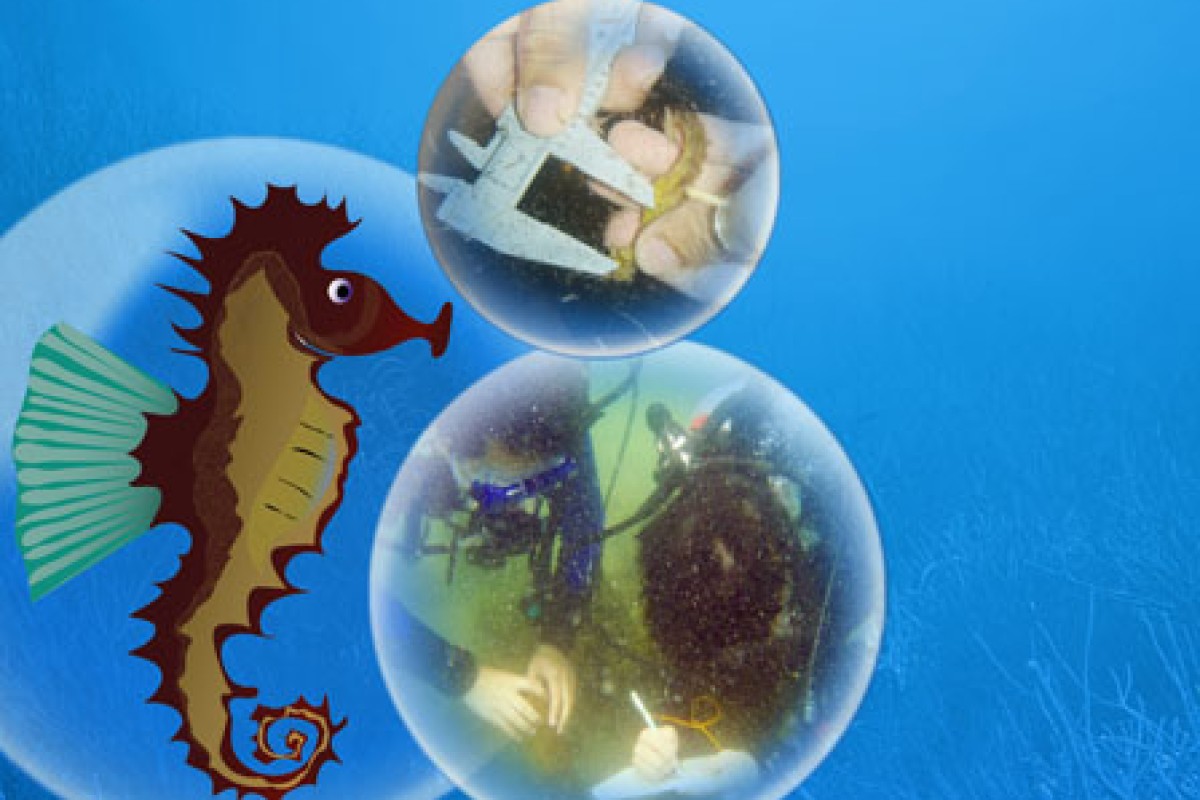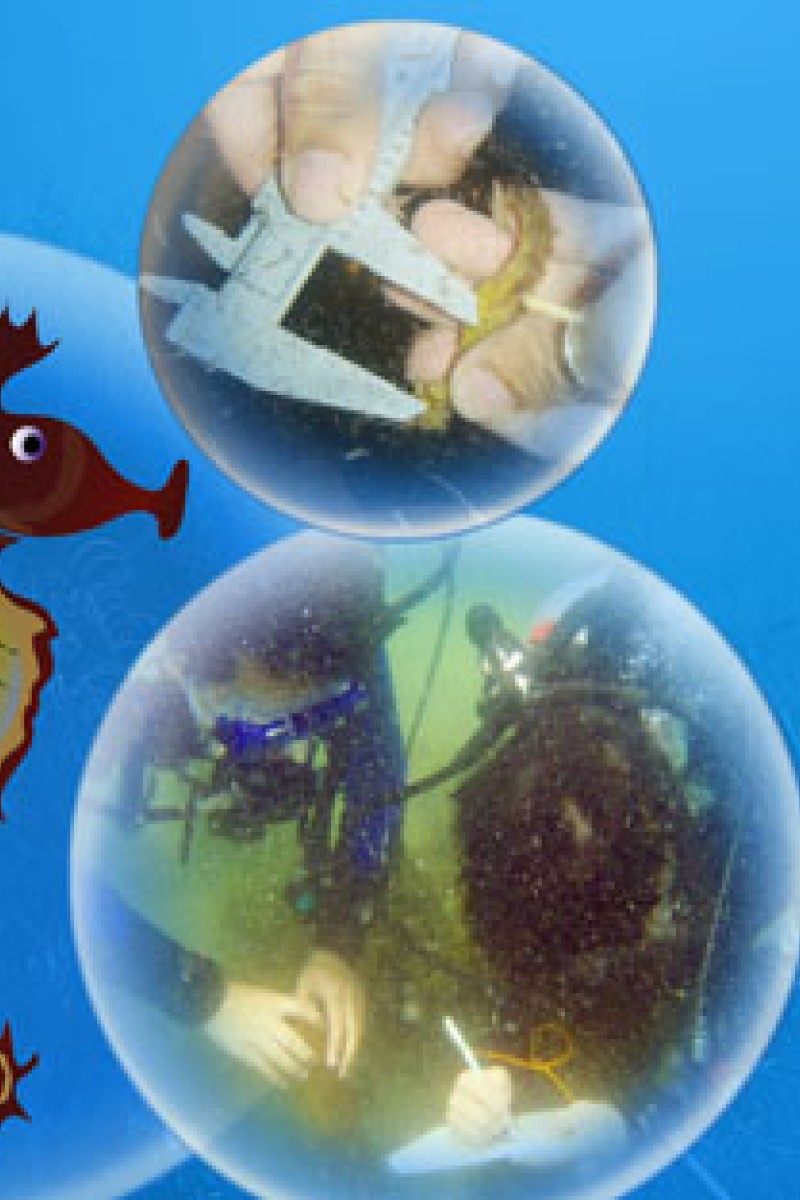
Seahorses in HK
Victoria Harbour's murky waters are home to more than one-tenth of the world's seahorse species. Here are some facts about these amazing yet vulnerable creatures.
Amazing biology
With their curly tails, equine heads and S-shape bodies, seahorses are oddballs of the marine world. They're members of the bony fish group and relatives of the pipefish.
They don't have scales like fish, but they, too, breathe with gills and use a swim bladder to regulate buoyancy. Their skeleton is made up of bony plates and fused jaws. Seahorses have no teeth and stomach. They digest food so fast they need to eat almost constantly. They feed on about 3,000 brine shrimp, plankton and microscopic marine life every day.
But what really sets them apart in the animal kingdom is this: it's the males that become pregnant. Male seahorses are born with pouches like a kangaroo's for hatching eggs. They can become pregnant again days after releasing a brood of about 250 babies. During mating, seahorses dance, change their colour and lock tails for a short swim.
Species and habitat research
Of the 34 known seahorse species, five are found in Hong Kong.
Michelle Cheung, a marine life expert at the Eco-Education and Resources Centre, is working on the territory's first comprehensive seahorse research project. The project is funded by the Ocean Park Conservation Foundation (OPCF).
Cheung said the most common species in the territory are the common seahorse (Hippocampus kuda) and the three-spot seahorse (Hippocampus trimaculatus). Because of their small size, reduced numbers and the water pollution, seahorses are hard to spot. Yet they have recently been seen in Sai Kung and the eastern waters of Hong Kong. "It was exciting to see them again after some years," Cheung said. "But the seahorses we found were quite young and immature. Of the 12 places where seahorses have been previously spotted by divers, we could only find them at six of the sites."
Seahorses live on coral reefs in shallow tropical and temperate waters. They camouflage themselves to blend in with their surroundings. "It's hard to spot a seahorse because they are shy creatures," said Beatrice Siu Yim-ling, a researcher with the OPCF who worked with Project Seahorse last year in the Philippines. "They often disguise themselves as sea grass."
Seahorses do not swim well because of their upright position. They anchor their tails to coral against currents.
Seahorses as medicine
The trade of seahorses is internationally regulated. Yet these delicate creatures are not immune to overfishing. Dried seahorses are widely used in traditional Chinese medicine as a cure for asthma and impotence. They're also prized in Indonesia and the Philippines.
Some 10,000kg of dried seahorses were imported and re-exported from Hong Kong in 2009, according to Timothy Ng Sau-kin, OPCF's deputy director. "Three-hundred fifty seahorses weigh about 1kg. Imagine how many are consumed every year."
"It's a pity that the only seahorses most people ever see are the dried ones in medicine shops," he added. "We need to do far more to protect this amazing species."
You can learn more about seahorses and marine life by joining the 16th Ocean Park Conservation Day this Saturday and Sunday. The theme will be "Colours of Water". There will be game booths, graffiti workshops and more. Proceeds from January 8 will be donated to OPCF's conservation efforts
